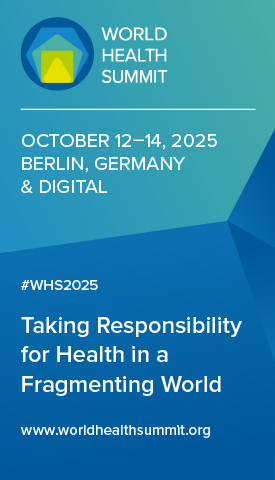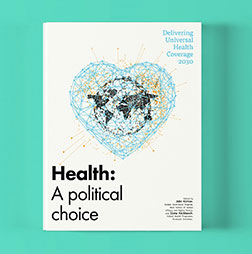G7 performance on health
Although health is not a top priority for the 2025 Kananaskis Summit, it has been on the G7 agenda since 1979. G7 leaders should thus continue to implement strategies from previous years.
Deliberations
Since 1979, G7 leaders’ communiqués have dedicated 65,046 words to health, averaging 10% per summit. Only the summits in 1982, 1994 and 1995 did not mention health.
From 1979 to 1999, G7 leaders averaged 3% of their words on health per summit, peaking in 1987 at 14% with leaders prioritising the HIV/AIDS epidemic and in 1997 with 11%, and otherwise not exceeding 6%.
From 2000 to 2024, attention to health averaged 17%. The highest was an unprecedented 72% in 2020, due to Covid-19. Other highs came in 2001 with 24% (and a new emphasis on biotechnologies), 2010 with 26% on maternal and child mortality, 2016 with 26% on the health-related Sustainable Development Goals, and 2021 with 24%. Attention then dropped to 17% in 2022, and 6% in 2023 and 2024.
Commitments
Since 1983 G7 leaders have made 624 health commitments on, inter alia, infectious diseases, the environment and hunger, the relationship between the global economy and health, research and development innovation, and antimicrobial resistance. G7 discussions have led to major initiatives including the Global Fund to Fight AIDS, Tuberculosis and Malaria. The 1999 summit set the foundations for international cooperation on disease surveillance and response, and on strengthening health systems in low- and middle-income countries.
From 1983 to 2005 the G8 (with Russia) made fewer than 20 health commitments (up to 13%) per summit. In 2006, this spiked to 60 (19%) and 42 (13%) in 2007. It dropped below 20 per summit again between 2008 and 2013, but the 2010 summit’s 12 commitments (17%) launched the Muskoka Initiative on Maternal, Newborn and Child Health.
Another spike came in 2015 with 61 commitments (16%) and 85 (25%) in 2016. This dipped from 2017 to 2021, with no more than 11 per summit.
However, the 11 health commitments made in 2020, at the onset of Covid-19, took 44% of the total. In 2021, the G7 made 89 (20%). Although the number remained high, it declined to 41 (8%) in 2022, 34 (5%) in 2023, and 23 (5%) in 2024.
Compliance
Members’ compliance with G7 health commitments averages 78%, just above the overall all-subject 77% average, as assessed by the G7 Research Group. Throughout the first 25 years of commitments, the highest compliance – 100% – came with those made in 1983, 1997 and 2012; it sank to 50% for 1999.
Compliance for 2013 to 2015 was at or above 86%, but then decreased to 67% for 2016 down to the lowest ever with 25% for 2017. It remained below average until 2020 when it jumped to 98%. It dropped to 79% for 2021 and 75% for 2022, before returning to 100% for 2023. By December 2024, health compliance for the 2024 Apulia Summit averaged 94%.
Recommendations
The five highest health-complying summits averaged 43 health commitments and 92% compliance. The five lowest-complying summits averaged only seven commitments and 46% compliance. Thus a higher number of commitments made at a summit suggests better compliance.
High compliance came on commitments on improving prevention, detection, response and recovery systems for pandemics and infectious diseases. High compliance also resulted from the shocks of Ebola in 2014 and Covid-19 in 2020.
Moreover, commitments made at summits with a pre-summit health ministerial meeting averaged higher compliance of 83% compared with 76% for summits without one.
Higher compliance among summits with more commitments on One Health may be an effect of placing the World Health Organization in a coordinating role. Indeed, across 101 health commitments made from 1983 to 2023, commitments with the highest compliance included references to an international organisation such the World Health Organization or the World Trade Organization, with an average of 76% even with shock-activated anomalies, such as 34% in 2008 for neglected tropical diseases, 69% in 2016 following the Ebola outbreak and 31% in 2018 for a commitment to the International Health Regulations and funding. Without these anomalies, compliance was 93% for commitments referencing international organisations.
A focus on antimicrobial resistance or mobilising funds also produced high compliance. Since 2021, the proportion of commitments related to financing global health has also steadily increased. Commitments related to financing averaged 80% compliance excluding the 22% and 31% anomalies of 2010 and 2018 respectively, and 72% including them.
Conclusion
Based on these findings, G7 leaders at Kananaskis should:
- Commit to strongly support the WHO and its IHR, focusing on sharing information.
- Make more commitments on health, especially regarding AMR, alternative care, One Health, the labour market, knowledge transfer, open international collaboration on research and development, improved access to the benefits and interoperability of global health security plans, and the safe use of artificial intelligence.
- Commit to the Impact Investing Initiative and other structured health financing plans.
- Recommend a pre-summit health ministerial meeting be held each year.
- Increase support for the G20’s joint meetings of finance and health ministers, and of agriculture and health ministers.
- Commit to improve health and environmental surveillance for AMR, climate change and biodiversity loss, food insecurity, safety and nutrition.












